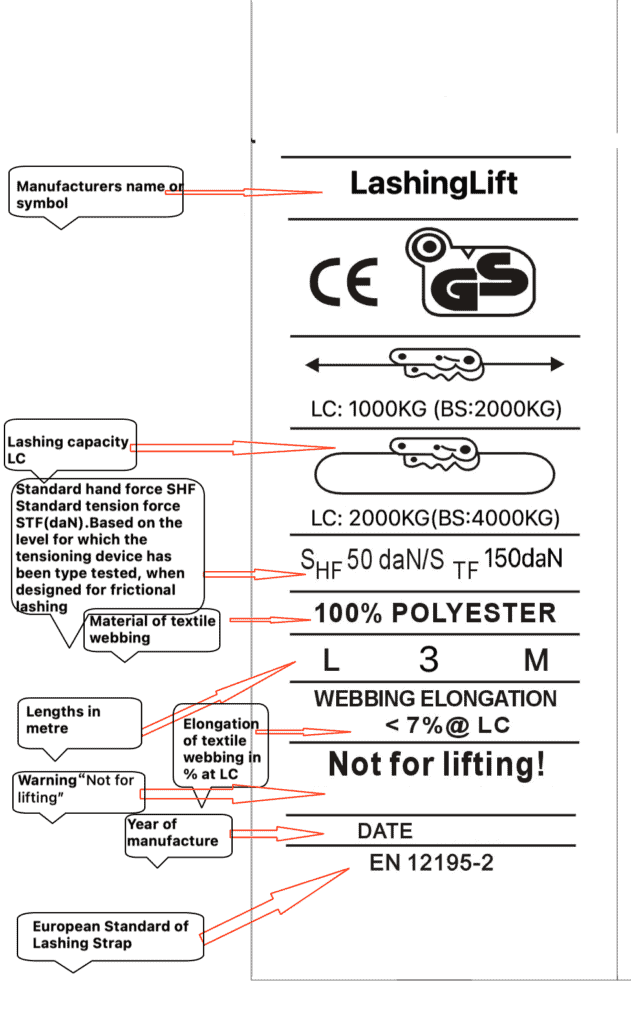Ratchet straps are essential tools for securing loads during transportation, lifting, or storage. Whether you’re in the trucking industry, shipping, or simply looking for a reliable way to fasten cargo, understanding the label on ratchet straps is crucial for ensuring safety, compliance, and proper use.
Why the Ratchet Strap Label Matters?
The label on a ratchet strap is not just a piece of information—it’s a vital safety tool. It tells you about the strap’s Working Load Limit (WLL), the materials it’s made from, and other important details that can help you use the strap effectively and safely. By understanding what’s written on the label, you can ensure that you don’t exceed the strap’s limits, use it for the wrong purpose, or miss vital warnings.
What information should be included on a safety label for lashing straps?

Lashing straps typically come with safety labels or markings that provide important information such as weight capacity, proper usage instructions, and warnings. These labels are essential for ensuring the safe and effective use of lashing straps.
- Lashing capacity (LC): This is the maximum load that the strap is designed to handle safely. It is usually expressed in pounds or kilograms.
- Manufacturer’s Information: Information about the manufacturer or supplier, including contact details.
- Material and Specifications: Details about the material used in the strap (such as polyester or nylon) and specifications like the breaking strength.
- Usage Instructions: Instructions on how to properly use the strap, including information on securing and tightening the load.
- Cautionary Statements: Warnings and precautions to ensure safe usage, such as not exceeding the working load limit, inspecting the strap before each use, and avoiding sharp edges.
- Compliance with Standards: Indications that the lashing strap complies with certain safety standards, such as EN 12195-2 for European standards or AS/NZS 4380 for Australian and New Zealand standards.
- Batch or Serial Numbers: Identifiers that can be useful for traceability and quality control.
- Not for Lifting warning: If you are referring to lashing straps used for securing loads during transportation and not for lifting applications, the warnings and labels may be specific to their intended use.
- STF AND SHF information
These details are crucial for understanding the capabilities and limitations of the lashing strap and ensuring its safe and proper usage. If the labels are missing or illegible, it is advisable to contact the manufacturer for replacement labels or seek guidance on proper usage.
Conclusion: Why You Should Always Read the Label
The label on your ratchet strap contains critical information that ensures the strap performs as expected and keeps your load secure. By understanding the WLL, tensile strength, material, and other details, you can make informed decisions about which strap to use for different loads. Furthermore, adhering to safety standards and maintaining regular inspections can prevent accidents and prolong the life of your ratchet straps.